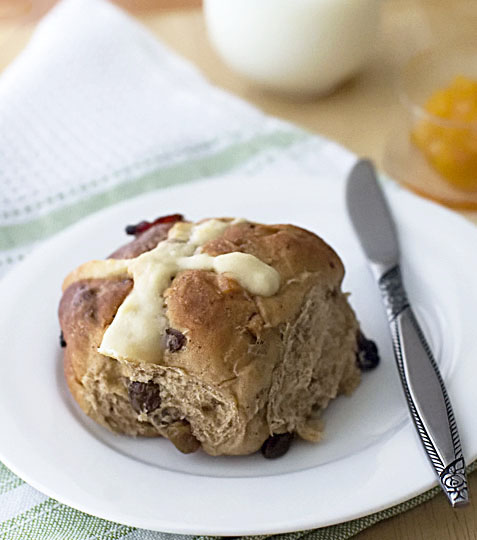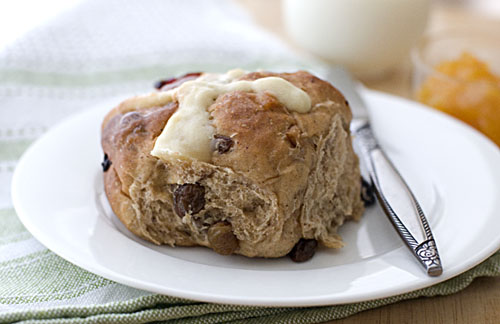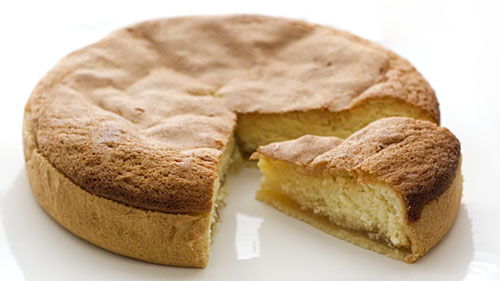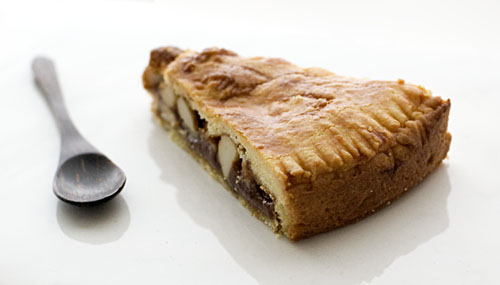Persimmon, cinnamon and yogurt brioche tart
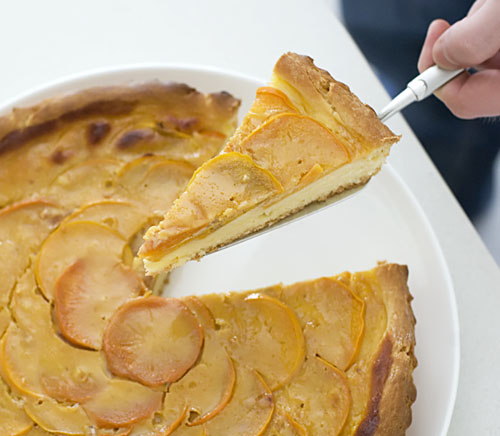
As we turn our clocks back, marking the passing of one season to the next, I can’t help but get a little excited thinking about the fruits that are slowly making their way into our shopping baskets and onto our tables. Fruits such as pears, quinces, and my favourite childhood snack, persimmons.
We loved them so much as kids that whenever persimmons were in season, my father would buy them (always the crunchy, non-astringent kind) by the tray or bagful, have them washed and cut into quarters and left in a dish for anyone to pick and nibble on. I used to marvel at the way some of the fruit had speckled flesh, which made them look as though they had been fed cinnamon while growing.
We occasionally had the dried version of the fruit as well. It was usually thinly sliced and added to sweet soups, but I never really liked its flavour or texture and tended to keep a wide berth of it.
Strangely, I’ve been enjoying eating raw persimmons for so long now that it hadn’t occurred to me until recently, to try cooking with them. A conversation with a friend led me to envision pot-roasting the fruit with brown sugar and perhaps a twist of lemon and vanilla, or peeling and poaching them in St. Germaine (an elderflower liqueur) or a spiced tea syrup. Once cooked, I plan to pair the fruit with little chestnut teacakes or perhaps my favourite gluten-free buckwheat cake.
In the meantime, the baking bug had me craving a generous slice of brioche, so I made a simple brioche ‘tart’, topped with slices of persimmon and yogurt custard.
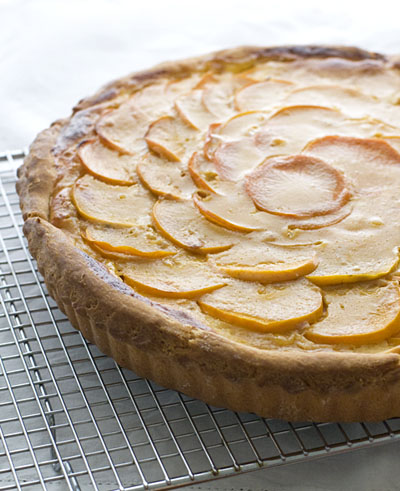
For this tart, I used Michel Roux’s brioche recipe from his book, Pastry. I have not provided the recipe for it here. You may already have your favourite, or if not, there are many recipes out there to choose from, even this gluten-free one. If persimmons aren’t in season, try figs and pears instead, or a mixture of berries.
Persimmon, cinnamon and yogurt brioche tart :
500g brioche dough, proved overnight in fridge (for a thinner tart or a more balanced fruit to brioche ratio, use 250g brioche dough and adjust baking time accordingly)
Yogurt custard (recipe below)
6 -7 small ripe persimmons (or 4 large ones)
Grease a 28 cm fluted tart tin. Roll the brioche dough out to a rough circle that is large enough to fit the tin and line the tin with the dough. Lightly press the edges up against the sides of the tin. Cover with clingfilm and allow to prove until double.
Preheat the oven to 180’C.
Slice the persimmons as thinly as possible (you can peel them first, if that’s your preference) and arrange them, slightly overlapping on the dough. Pour the custard over the persimmon slices. Bake in the oven for 15 minutes, then reduce the temperature to 150’C and continue baking for an additional 25 – 30 minutes or until the brioche is golden brown.
Allow the tart to cool until just warm before serving. This tart is best eaten on the day it is made.
Yogurt custard :
120g European-style/Greek yogurt
60g caster sugar
4 egg yolks
1 teaspoon ground cinnamon
1 tablespoon cornflour
1/2 teaspoon vanilla extract
Whisk all the ingredients together just to combine.

